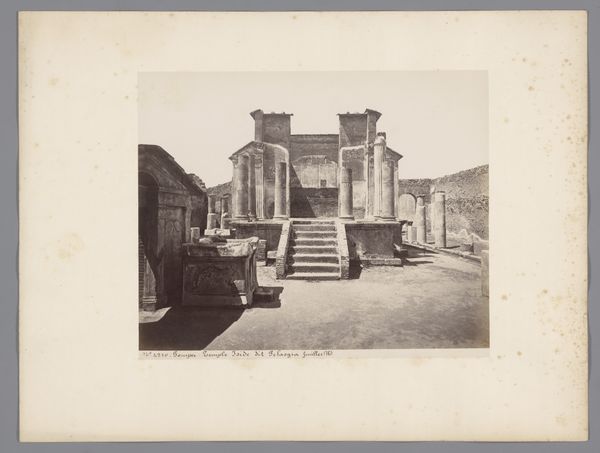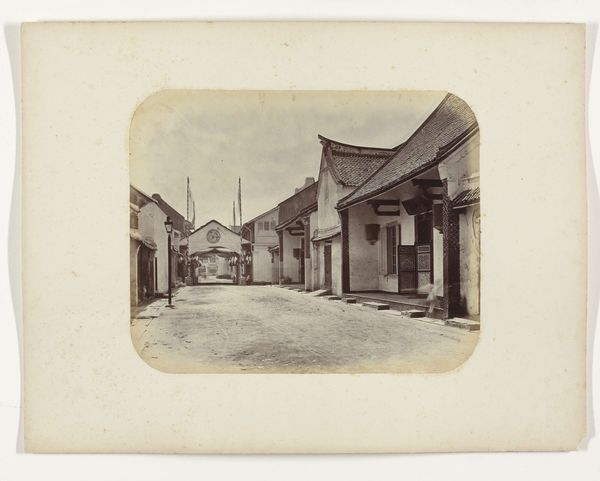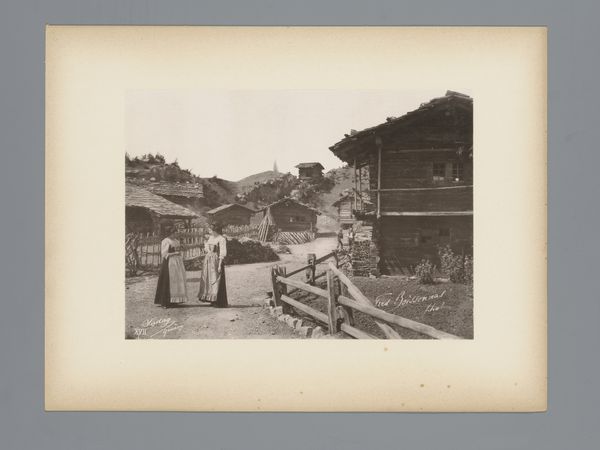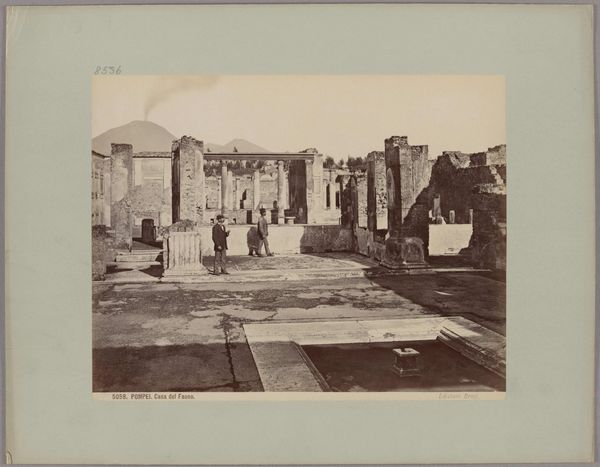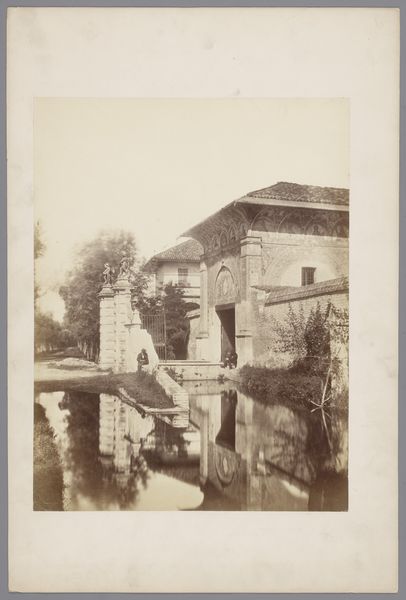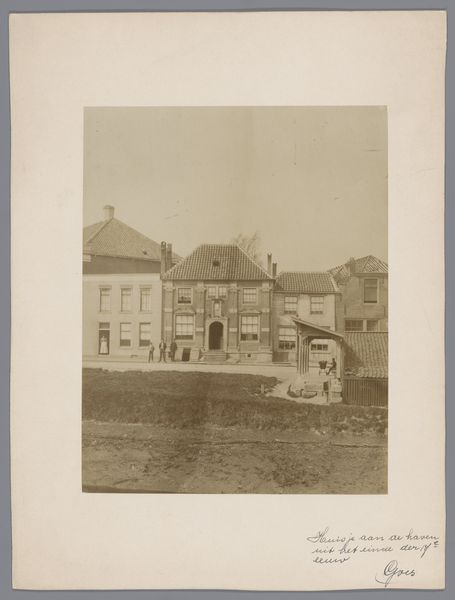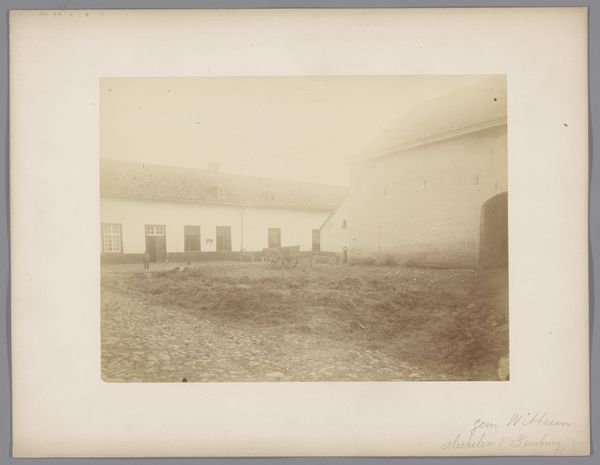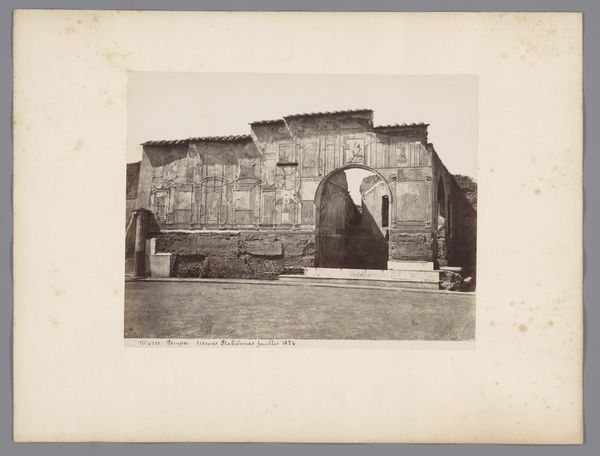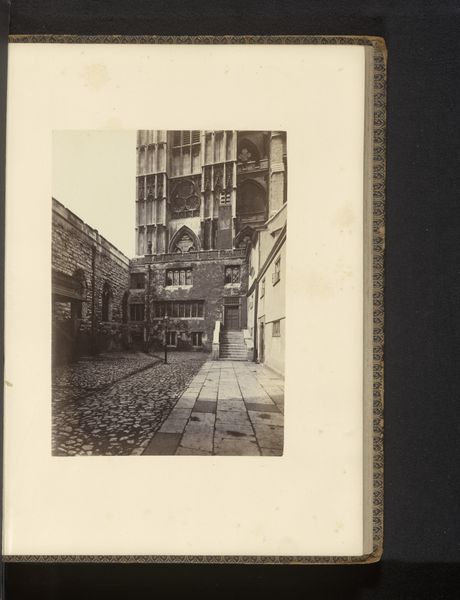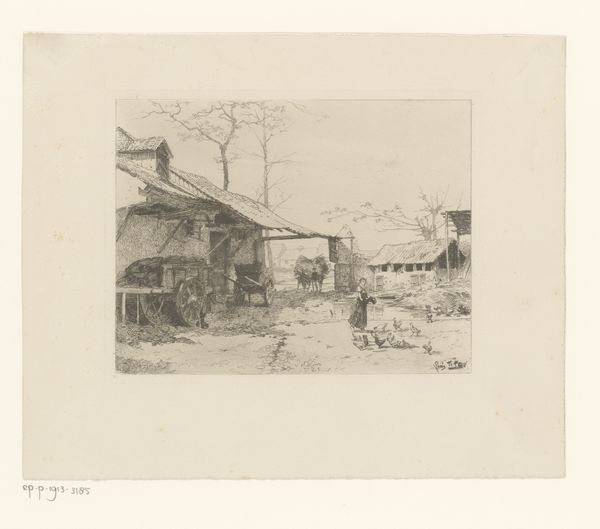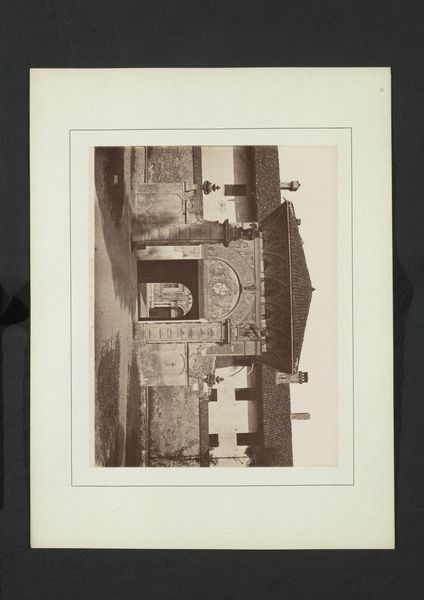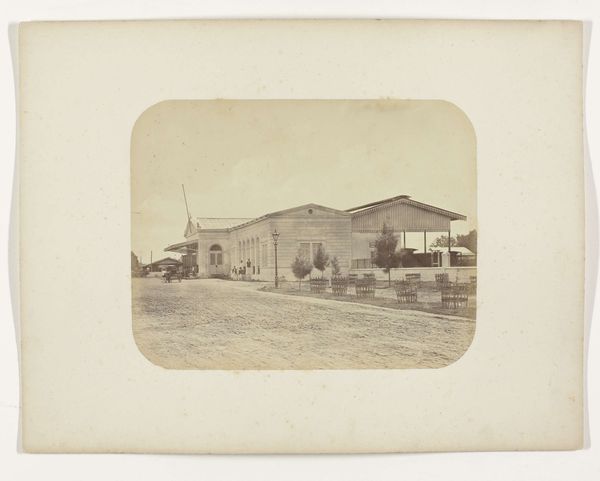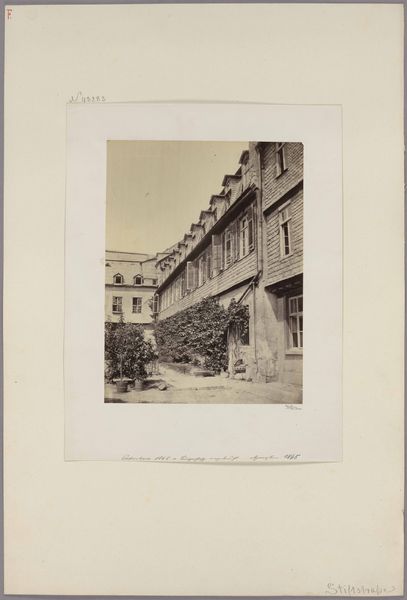
print, photography, site-specific, gelatin-silver-print
# print
#
landscape
#
photography
#
ancient-mediterranean
#
site-specific
#
gelatin-silver-print
Dimensions: height 307 mm, width 405 mm
Copyright: Rijks Museum: Open Domain
Curator: This gelatin silver print, taken sometime between 1857 and 1914, captures what remains of the Temple of Augustus in Pompeii, Italy. It's attributed to Giorgio Sommer and is currently held here at the Rijksmuseum. Editor: It feels profoundly still, almost ghostly. The monochrome tones amplify the sense of antiquity. You can almost hear the echoes of voices from centuries past. What strikes you most about the site? Curator: The ruin itself highlights a complex interplay between natural disaster, the labor of excavation, and processes of photographic representation. Sommer wasn't just documenting, he was participating in the nineteenth-century construction of archaeological knowledge. This particular gelatin silver print exemplifies photography's increasing use in science and scholarship during that era. Editor: I get a real sense of transience observing it. This ruin tells so many stories: life in first-century Pompeii, the shock of Vesuvius, then centuries hidden, excavated, photographed... I imagine Sommer standing where I'm standing now, his own perspective filtered through time. Curator: Exactly. His composition carefully frames the exposed frescoes and the decaying architectural features, really inviting us to ponder Pompeii's history, both ancient and modern, particularly through his choice of materials for this landscape, showcasing photography’s accessibility, especially compared to painted alternatives. Editor: It also makes you think about the sheer effort involved in bringing a camera, setting up, developing plates—in this landscape so dramatically different from our experiences, not that far off from the labor required of archaeologists or builders. Each has its way of documenting through interacting directly with place. Curator: The intersection of documentation, art, labor, and time gives photographs like this immense value. They speak volumes about society's engagement with antiquity through production of photographic technologies and print. Editor: Looking at this, it makes you contemplate humanity's lasting legacy versus the ephemerality of individual lives. I'm definitely drawn into the past’s persistent and changing materiality here.
Comments
No comments
Be the first to comment and join the conversation on the ultimate creative platform.

